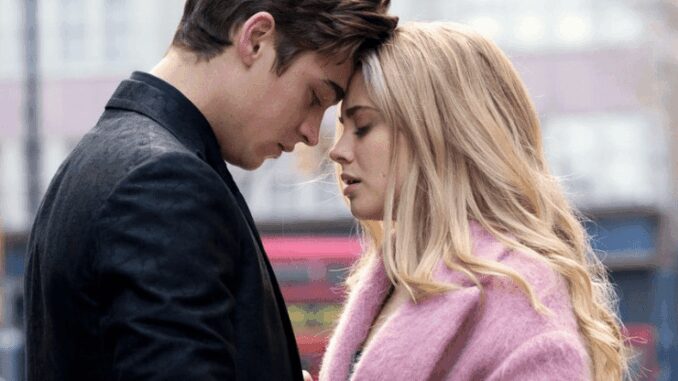
From Wattpad to Film Finale: How the After Franchise Reached Its Conclusion
In the sprawling, democratic expanse of the digital age, where fanfiction once resided in the shadowy corners of the internet, a new epoch of storytelling has emerged. Wattpad, a platform that democratized authorship and connected millions of readers directly to amateur writers, became an unlikely incubator for literary phenomena. Among its most explosive success stories is the After franchise, a saga that began as a One Direction fanfiction and culminated in a five-film cinematic journey, offering a fascinating case study in the evolution of modern media consumption and the relentless pursuit of narrative closure. The conclusion of After was not just the end of a series; it was the final note in a symphony that traversed fan-generated content, traditional publishing, and Hollywood’s blockbuster machinery.
The genesis of After is intrinsically linked to the rebellious spirit of Wattpad. In 2013, Anna Todd, then an army wife looking for an outlet, began writing a story inspired by Harry Styles of One Direction. Renaming him Hardin Scott, a brooding, tattooed British bad boy, and pairing him with Tessa Young, an innocent college freshman, Todd tapped into a potent cocktail of forbidden romance, intense emotional drama, and classic “good girl falls for bad boy” tropes. The story, serialized chapter by chapter, garnered millions of reads, with readers engaging directly through comments, shaping the narrative in real-time, and forming a fervent, global community. This grassroots popularity was the first crucial step towards its conclusion; a story so deeply embedded in its audience’s psyche demanded a definitive ending.
The meteoric rise on Wattpad caught the attention of traditional publishers, leading to a multi-book deal with Simon & Schuster. The “de-fanning” process—removing explicit references to Harry Styles and One Direction—transformed After from a fanfiction into an original young adult novel series. This leap cemented its commercial viability and opened the floodgates for a film adaptation. Voltage Pictures acquired the rights, recognizing the immense, pre-existing fanbase as a built-in audience. The challenge then became translating the intensely internal, often problematic, and wildly popular narrative from page to screen.
The After film series, starring Josephine Langford as Tessa and Hero Fiennes Tiffin as Hardin, debuted in 2019, immediately captivating its target demographic. While critically panned for its clichéd plot, repetitive cycles of toxicity, and questionable romanticizing of unhealthy relationships, the films were a commercial success. The undeniable chemistry between Langford and Fiennes Tiffin, coupled with the glossy production values and the faithful recreation of iconic scenes, resonated deeply with the millions who had devoured the books. Each subsequent film – After We Collided (2020), After We Fell (2021), and After Ever Happy (2022) – continued this trend, proving to be a critic-proof phenomenon driven by an insatiable fan demand for more.
However, the question of “conclusion” became particularly pressing as the films moved beyond the original four-book arc. Anna Todd’s final novel, After Ever Happy, offered a definitive, if sometimes controversial, epilogue that chronicled Hardin and Tessa’s tumultuous on-again, off-again relationship over many years, leading to an eventual, albeit hard-won, stability. For many readers, this was closure. But Hollywood, recognizing the enduring appeal and the desire for a cinematic swansong, sought to extend the narrative.
This desire for an ultimate, unequivocal end led to After Everything (2023). While drawing from elements of the original epilogue and Todd’s prequel novel Before, After Everything largely functioned as a standalone cinematic addition, crafted to provide a more explicit and singular resolution for the characters. The film shifts focus, dedicating significant screen time to Hardin’s journey of self-discovery, his struggles with addiction, mental health, and the profound impact Tessa had on his growth. It follows him to Portugal, attempting to write his next book and finally move past the toxicity that defined his youth.
The conclusion of After Everything hinges on the idea of breaking cycles. It’s a cathartic release from the emotional merry-go-round that defined Hardin and Tessa’s relationship, showcasing Hardin’s internal work before their inevitable, yet matured, reunion. The film provides a final, hopeful glimpse into their future, with the implication that they have truly grown, learned from their past mistakes, and are finally ready for a healthy, stable partnership. It’s a softer, more reflective ending than the previous films, designed to offer fans the peace of mind that, after all the drama, their beloved “Hessa” found their way.
The After franchise’s journey from a fanfiction on Wattpad to a five-film series reaching its definitive conclusion with After Everything is a testament to the transformative power of digital storytelling. It illustrates how an author’s raw imagination, fueled by direct reader engagement, can transcend traditional publishing barriers and capture the attention of a global audience. The conclusion, though perhaps not perfect in the eyes of all critics or even all fans, represents the fulfillment of a promise: to see a beloved, albeit flawed, story through to its very end, providing a final, cinematic farewell to a love story that captivated millions, one chapter, and one film, at a time.
